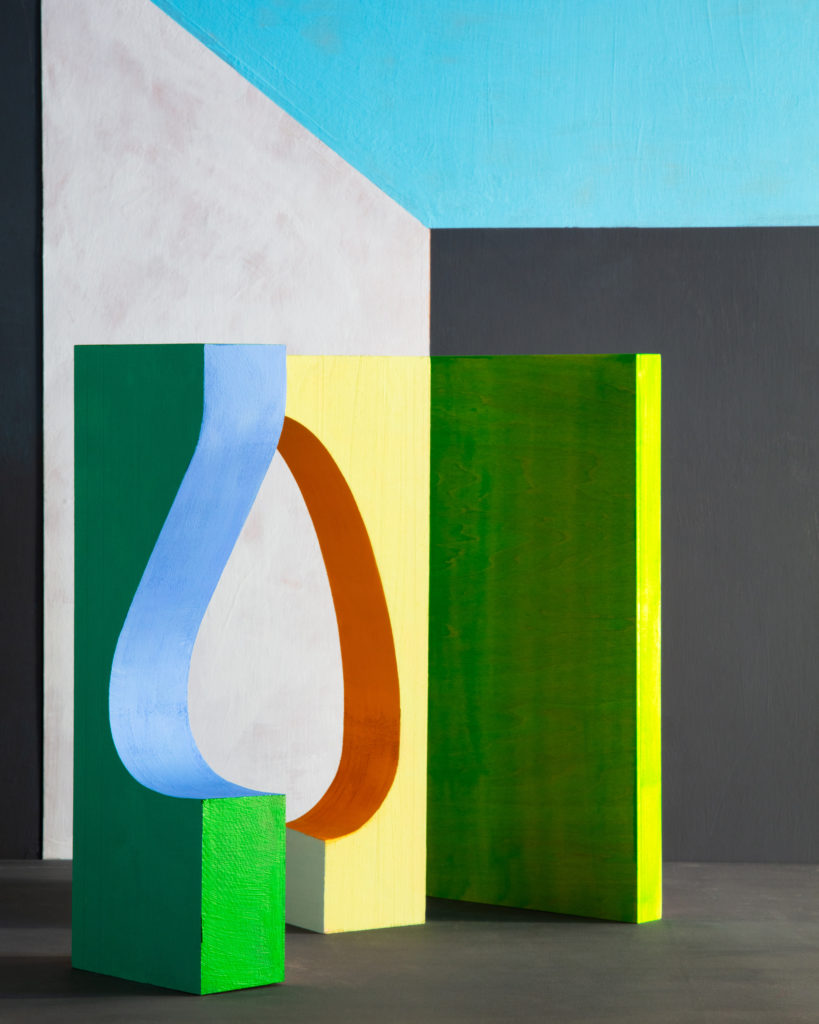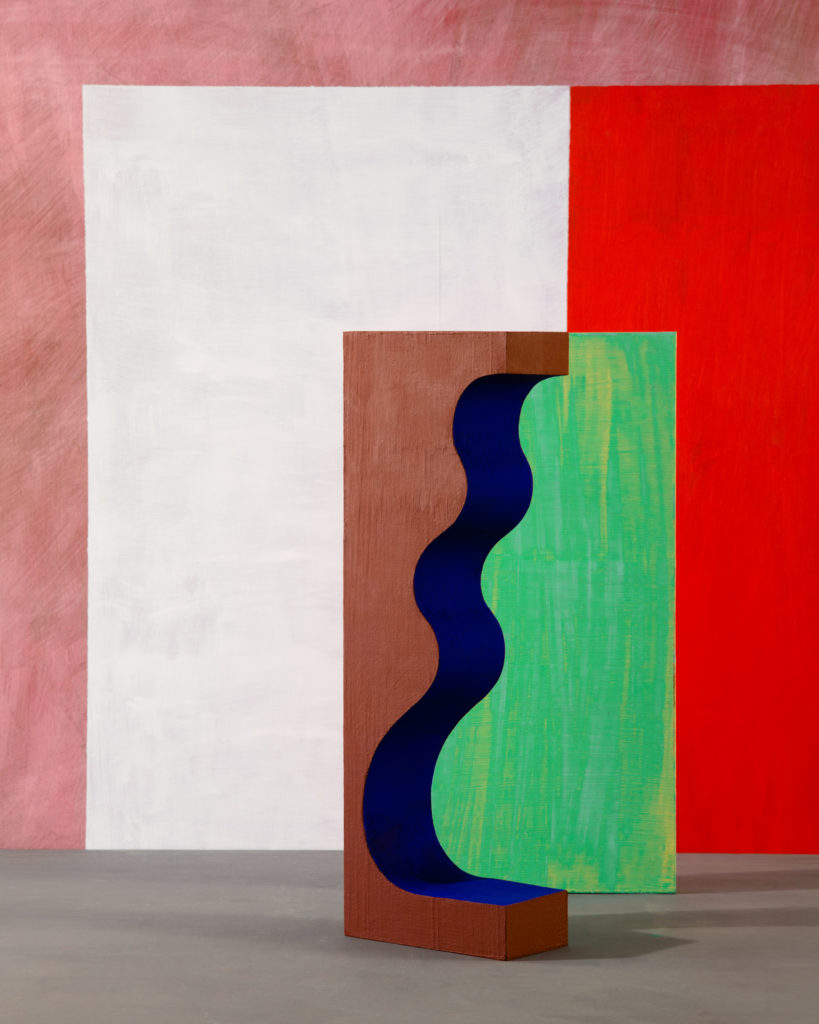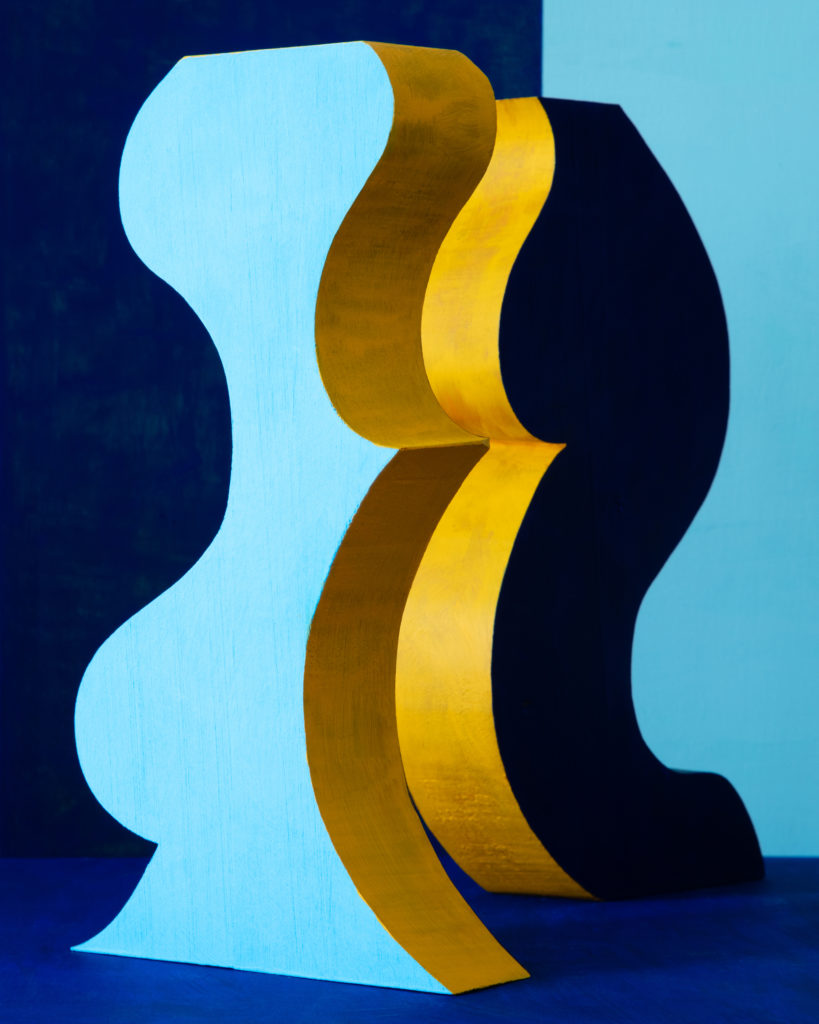SEEING THINGS
by Erin O’Keefe
Selected by
Rebecca Leona van Enter,
Artist and
Gallery Liaison, Unseen

“Carefully aligning colourful 3D blocks, Erin O’Keefe’s abstract compositions play with space and spatial perception. The resulting photographs trick the eye, and are often mistaken for paintings.”
Unseen Platform: How long do you spend on the composition of each work? Do you make sketches of the desired result beforehand, or is it a matter of playing around until you’re happy?
Erin O’Keefe: It’s a very open ended situation, really a matter of trial and error. Eventually, there is some relationship that feels fruitful – but I have a very difficult time predicting that. I really enjoy the process of discovery and looking, looking again, and again, and so on. There’s never a particular goal, although I’m always looking for a condition where there is some ambiguity or multiple readings possible in the final image. Sometimes I can see that in the viewfinder, although I’m often surprised when I get home and am able to see the image on a larger screen.
Space and spatial perception is at the core of your practice. How does this subject continue to inspire you?
Our perception of space is at the centre of our lived experience. I am interested in how mutable this perception is – and how we mostly just take it for granted. By finding ways of highlighting that mutability in my work, my hope is to invite people to think more consciously about the act of seeing. I think there is a pleasure in trying to work out these confounding relationships in the images.
In your recent exhibition Seeing Things, you included sculpture alongside photographic works for the first time. Do you have plans for more sculptures in the future?
Yes, I would like to continue making sculpture. It’s a different way of approaching the same issues, so I’m interested in the way the photographs and sculptures can be understood in relation to each other.
Your colour palette is very distinctive, can you tell us about how you select which shades to use?
My colour sense is something that comes through osmosis – it may draw from a Giotto fresco, a grocery display, or just someone’s t-shirt on my morning commute. That being said, the way the colour functions spatially in the images is something that I work hard to predict and understand. As a photographer, I’m using light in combination with these painted surfaces, I can shift and change the colour very quickly and dramatically by small adjustments to the position of either the object or the light source. Certain colours recede, others move forward and flatten – it’s a very rich situation to play with when building an image.
In previous interviews you’ve spoken a lot about how your background in architecture has informed your artistic practice. However, I’m curious about your personal experience of this career change. How have you adjusted to life as a full-time artist?
I would say the upside and downside are the same – there is now absolutely no distinction between my personal life and my work life – which is exhilarating and exhausting in equal measure. It allows a level of focus on the work that I never had before, but it also means I have to work a bit more intentionally to create time for other things.


